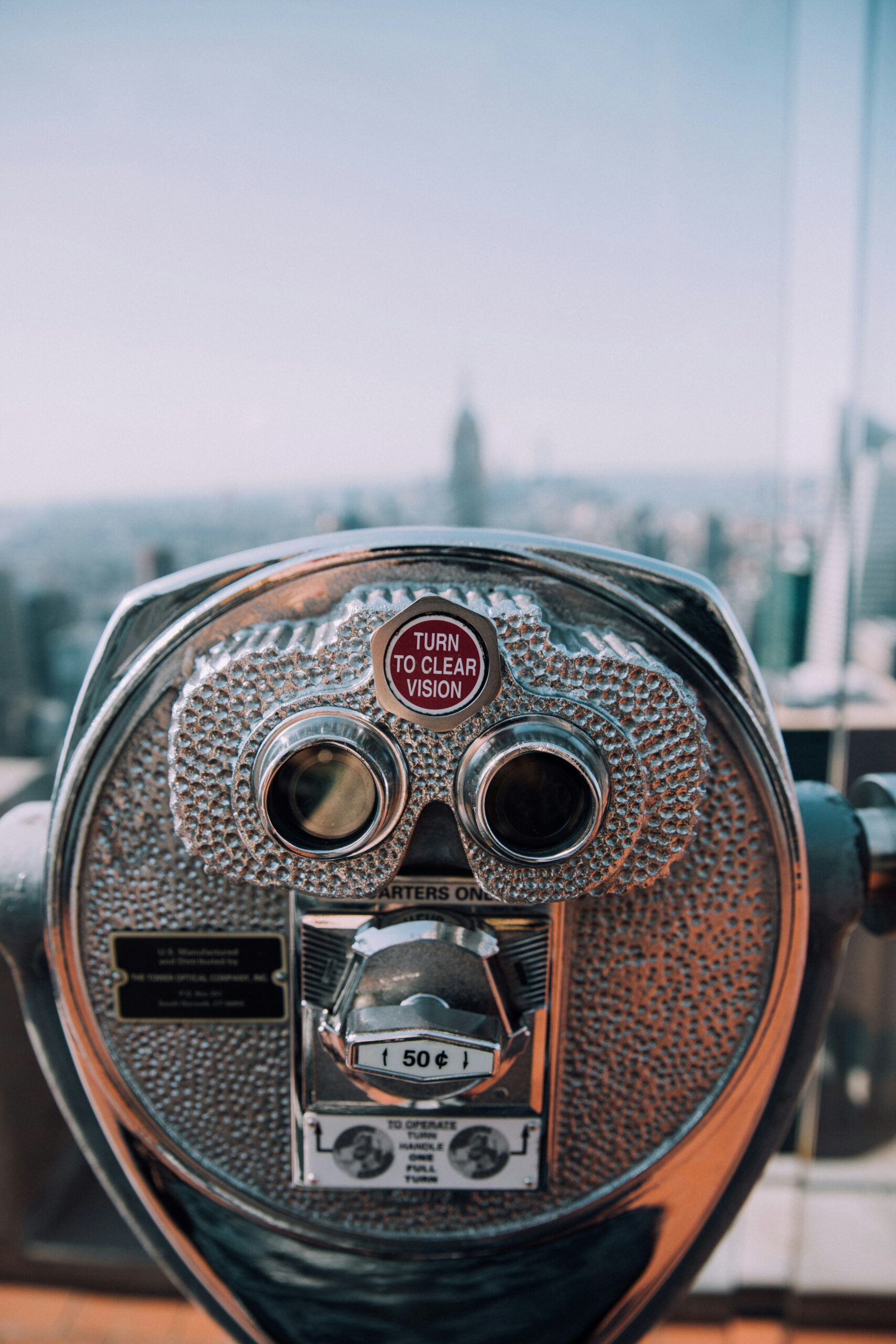Imagine being able to see every feather and detail of your favorite birds up close and personal. High-end birding binoculars have become a must-have accessory for bird enthusiasts, offering a whole new level of viewing experience. From advanced lens technology to superior image stabilization, these binoculars encompass a range of popular features that elevate the joy of birding to new heights. Discover the world of high-end birding binoculars and explore the remarkable features that make them a must-have for every avid bird watcher.

Magnification power
Understanding magnification power
Magnification power refers to the level of enlargement provided by a pair of binoculars. It is represented by a number followed by an “x” (e.g., 8x, 10x, 12x). The first number indicates how many times closer an object appears compared to viewing it with the naked eye. For example, with 8x magnification, an object will appear eight times closer. Understanding the magnification power is crucial in selecting the right binoculars for birding adventures.
Importance for birding
When it comes to birding, magnification power plays a vital role. Higher magnification allows birders to observe birds in greater detail, making it easier to identify specific species and witness their distinct features. For instance, a higher magnification power such as 10x or 12x can provide a clear view of a bird’s plumage, beak shape, and other intricate markings. However, it’s important to strike a balance as higher magnifications can also increase image shakiness and decrease the field of view.
Common magnifications in high-end models
In high-end birding binoculars, you will typically come across magnification powers ranging from 8x to 12x. These magnifications strike a good balance between detailed observation and stability. An 8x magnification offers a wider field of view, making it easier to track birds in flight or spot birds in dense foliage. On the other hand, a 10x or 12x magnification provides incredible detail, allowing birders to appreciate even the finest features of a bird. Ultimately, the choice of magnification power depends on personal preference and specific birding needs.
Lens diameter
Understanding lens diameter
Lens diameter refers to the size of the objective lenses, often expressed in millimeters. These lenses are located at the front of the binoculars and are responsible for capturing light. The larger the lens diameter, the more light the binoculars can gather, resulting in a brighter image. Understanding lens diameter is crucial in determining the overall brightness and clarity of the view through your binoculars.
Impacts on brightness and field of view
The lens diameter plays a significant role in the brightness of the image you see through your binoculars. Larger objective lenses, such as 50mm, allow more light to enter the binoculars, resulting in a brighter image even in low-light conditions. Additionally, a larger lens diameter also contributes to a wider field of view, enabling birders to effortlessly scan their surroundings and locate birds.
Common lens diameters in high-end models
In high-end birding binoculars, you will typically find lens diameters ranging from 32mm to 56mm. A lens diameter of 42mm is considered a popular choice among birders as it strikes a balance between brightness and portability. It allows ample light to enter while maintaining a reasonable size and weight for extended birding trips. However, if you prioritize maximum brightness and don’t mind a slightly larger size, binoculars with 50mm or 56mm lens diameters can provide an exceptional viewing experience, especially in low-light conditions.
Optical coating
Purpose of optical coatings
Optical coatings are thin layers applied to the lenses of binoculars to enhance their performance. These coatings serve multiple purposes, including reducing glare, increasing light transmission, improving contrast, and minimizing reflections. They play a crucial role in maximizing the image quality and overall viewing experience.
Types of optical coatings
There are various types of optical coatings used in high-end birding binoculars. Some common coating types include:
- Fully coated: This refers to a single layer of coating applied to all air-to-glass surfaces of the lenses. It helps improve light transmission and reduces glare.
- Multi-coated: Binoculars with multi-coated lenses have multiple layers of coating on some or all air-to-glass surfaces. These coatings enhance image brightness, color accuracy, and contrast.
- Fully multi-coated: This is the highest level of lens coating, with multiple layers applied to all air-to-glass surfaces. Fully multi-coated lenses provide superior light transmission and image quality, resulting in sharp and vibrant views.
Benefits for birding binoculars
Optical coatings offer immense benefits for birding binoculars. By reducing glare and minimizing reflections, they ensure a clear and undistorted view, even in bright lighting conditions. The increased light transmission provided by these coatings enhances image brightness, making it easier to spot birds in low-light environments such as forests or during dawn and dusk. The improved contrast and color accuracy achieved through optical coatings allow birders to appreciate the intricate details of birds’ plumage, facilitating species identification and enhancing the overall birding experience.
Prism type
Differences between roof and Porro prisms
Binoculars utilize prisms to correct the image orientation and provide a more comfortable viewing experience. There are two main types of prisms used in binoculars: roof prisms and Porro prisms.
Roof prisms are characterized by their streamlined, compact design. They allow for a straight barrel shape, making them more lightweight and ergonomically friendly. Porro prisms, on the other hand, have an offset prism design that results in a bulkier and wider shape.
Advantages of each prism type
Roof prisms offer several advantages for birding binoculars. They provide a slim and compact profile, making them easier to handle and carry during long birding excursions. Roof prisms are also more resistant to misalignment, ensuring consistent image quality. Additionally, their straight-barrel design promotes improved handling and durability, perfect for birders who need to pack their binoculars in tight spaces.
Porro prisms, though less compact, can provide a more three-dimensional and immersive viewing experience. They often deliver superior depth perception and a wider field of view due to their wider prism design. Additionally, Porro prism binoculars tend to be more affordable, making them a great choice for birders on a budget.
Prism types in high-end models
High-end birding binoculars commonly incorporate roof prisms due to their compactness and durability. The streamlined design allows manufacturers to create lightweight models without compromising image quality. However, there are also high-end models that utilize Porro prisms, catering to birders who value a wider field of view and immersive viewing experience. Ultimately, the choice between roof and Porro prisms depends on personal preferences, budget constraints, and specific birding requirements.

Water and fog proofing
Methods for water and fog proofing
Water and fog proofing are essential features in birding binoculars, ensuring their performance remains unaffected even in challenging environmental conditions. To achieve these properties, high-end binoculars employ two primary methods:
- O-ring sealing: Binoculars with O-ring seals create a moisture-resistant barrier, preventing water from entering the internal components. These seals are typically found in the optical tubes, eyepiece housings, and focus mechanisms.
- Nitrogen or argon purging: High-end binoculars are often purged with nitrogen or argon gas to eliminate moisture and prevent fogging. These gases are dry and inert, ensuring an internal environment resistant to condensation.
Importance for birding in different weather conditions
Birding often takes place in various weather conditions, including rain, humidity, and extreme temperature changes. Water and fog proofing in binoculars are crucial to ensure uninterrupted birding experiences. Rain and moisture can damage the internal components of binoculars, leading to decreased performance or even complete failure. Fogging, caused by rapid temperature changes, can obstruct the lenses, making it impossible to see clearly. With effective water and fog proofing, high-end binoculars provide peace of mind and allow birders to focus on observing birds without worrying about adverse weather conditions.
Evidence of effective proofing in high-end models
High-end birding binoculars often come with certifications or markings indicating their water and fog proofing capabilities. These may include designations such as “waterproof” or “fogproof,” accompanied by specific depth or immersion time ratings. Additionally, reputable manufacturers subject their binoculars to rigorous testing procedures to ensure their reliability under challenging conditions. Look for reputable brands that adhere to industry standards and provide detailed information regarding the water and fog proofing features of their high-end models.
Weight and size
Implications of weight and size
The weight and size of birding binoculars have important implications, particularly for birders who spend long hours in the field. Heavier and bulkier binoculars can cause fatigue and strain on the neck and shoulders, resulting in discomfort and reduced enjoyment during birding expeditions. Conversely, lightweight and compact binoculars offer greater portability and ease of use, allowing birders to carry them for extended periods without feeling burdened.
Balance between portability and optical performance
Achieving the right balance between portability and optical performance is crucial when selecting high-end birding binoculars. While it’s tempting to opt for the lightest and most compact model available, it’s important to consider the impact on optical quality. Sometimes, larger binoculars with more sophisticated optics provide superior image clarity and brightness. Therefore, finding a balance between portability and optical performance is key to ensure a rewarding birding experience without compromising on image quality.
Weight and size traits of high-end models
High-end birding binoculars often possess lightweight and compact designs without compromising optical performance. Advanced materials such as magnesium alloys or carbon fiber composites are utilized in their construction, allowing for durability and reduced weight. Additionally, ergonomic designs and efficient manufacturing techniques help keep the size and weight of these binoculars to a minimum. High-end models strive to strike the perfect balance between portability and performance, ensuring birders can enjoy superior optics without being burdened by excessive weight or bulk.

Eye relief
Understanding eye relief
Eye relief refers to the distance between the eyepiece lens and your eyes when viewing through binoculars. It directly affects the comfort level and ease of use, particularly for individuals who wear glasses or have limited eye-to-lens distance. Sufficient eye relief ensures that you can observe the entire field of view without straining your eyes or having to press the eyepieces against your glasses.
Importance for individuals with glasses
For birders wearing glasses or those with limited eye-to-lens distance, sufficient eye relief is of utmost importance. Without adequate eye relief, the field of view gets obstructed, causing a loss of image quality and potentially leaving out peripheral details. Optimal eye relief allows for a clear view of the entire field and prevents any discomfort caused by eyeglass frames getting in the way. Therefore, high-end birding binoculars often prioritize a generous eye relief to cater to the needs of individuals with glasses.
Eye relief traits in high-end models
High-end birding binoculars strive to provide comfortable viewing experiences for users with glasses. They typically offer longer eye relief measurements, often exceeding 15mm. This generous eye relief ensures that even if you’re wearing glasses, you can still enjoy an unobstructed view without sacrificing any part of the field of view. Additionally, high-end models may incorporate features like twist-up eyecups, allowing for easy adjustment and customization to fit with eyeglasses or personal preferences.
Close focus distance
Importance of close focus distance
The close focus distance refers to the minimum distance at which binoculars can focus and still provide a sharp and clear image. This feature is particularly important for birders who enjoy observing birds at close range or those interested in studying minute details such as feathers or behavior. A shorter close focus distance enables birders to capture intricate moments during birding adventures, enhancing the overall experience.
Use when birding in various habitats
Birding often takes place in diverse habitats, ranging from dense forests to open fields and wetlands. Having a close focus distance capability enables birders to appreciate the beauty of birds in different environments. For example, in forested areas, binoculars with shorter close focus distances allow for in-depth observation of birds perched on branches or hidden among foliage. In coastal areas or wetlands, close focus capabilities are valuable for viewing waterfowl, shorebirds, and other avian species at close quarters.
Close focus distances in high-end models
High-end birding binoculars often excel in their close focus distance capabilities, providing birders with the opportunity to observe birds up close. While specifications may vary, it is not uncommon to find close focus distances as short as 4-6 feet in high-end models. These binoculars allow birders to appreciate the intricate details and behavior of birds, even in challenging or close-up situations. Close focus capabilities are a sought-after feature in high-end binoculars, enhancing the versatility and performance of the optics.
Field of view
Understanding field of view
Field of view (FOV) refers to the width of the area visible through binoculars, typically measured in feet at a specific distance. It represents how much of the surrounding area you can see without moving the binoculars. A wider field of view is advantageous for birders as it allows for easier tracking of birds in flight and scanning wider landscapes to locate birds.
Importance for finding and tracking birds
A wide field of view enhances the birding experience by facilitating the location and tracking of birds. It allows you to see more of the surroundings, aiding in the identification and tracking of birds in flight or those moving through dense vegetation. With a wider FOV, you can quickly pan and scan the environment, increasing the chances of spotting elusive and fast-moving species.
Field of view traits in high-end models
High-end birding binoculars often offer wider fields of view, ensuring birders don’t miss any action. While FOV can vary among models, it is not uncommon to find binoculars with FOV measurements exceeding 350 feet at 1000 yards. This wide field of view enables birders to effortlessly track birds in flight, follow their movements, and observe their behavior in a broader context. When choosing high-end binoculars, consider the desired FOV based on your birding style and environments you frequently encounter.
Durability and warranty
Materials and design for durability
High-end birding binoculars are built to withstand rigorous outdoor use and challenging conditions. They often incorporate durable materials and robust construction techniques to ensure their longevity. Common materials used include lightweight yet sturdy alloys like magnesium, which offer a good balance between weight savings and durability. Premium models may also feature rugged rubber armor or protective coatings to shield against impacts and abrasions.
Warranty options and what they cover
Many high-end birding binoculars come with comprehensive warranty coverage to provide peace of mind to the user. Warranty options can vary among manufacturers, but they generally cover manufacturing defects and functional failures that occur under normal usage conditions. While specific coverage details and duration may differ, it’s common to find warranties ranging from a few years to lifetime coverage. It is essential to carefully review the warranty terms and conditions before making a purchase.
Durability and warranty features in high-end models
High-end birding binoculars prioritize durability and often integrate advanced features to enhance their resilience. These features can include waterproof and fogproof properties, as mentioned earlier, which protect the internal components from moisture damage. Additionally, high-end models may incorporate protective lens coatings to repel dirt, dust, and smudges, ensuring clear and pristine optics even in challenging environments. Through their quality construction, superior materials, and extended warranty coverage, high-end birding binoculars are designed to withstand rigorous use and provide years of reliable performance.
In conclusion, high-end birding binoculars encompass a range of advanced features and technologies that enhance the overall birding experience. Through the understanding of magnification power, lens diameter, optical coatings, prism types, water and fog proofing, weight and size, eye relief, close focus distance, field of view, and durability and warranty, birders can make informed decisions when selecting the perfect binoculars for their birding adventures. Whether observing birds in flight, admiring their intricate details up close, or effortlessly scanning vast landscapes, high-end binoculars offer the optical clarity and reliability necessary to fully immerse yourself in the captivating world of bird watching.
